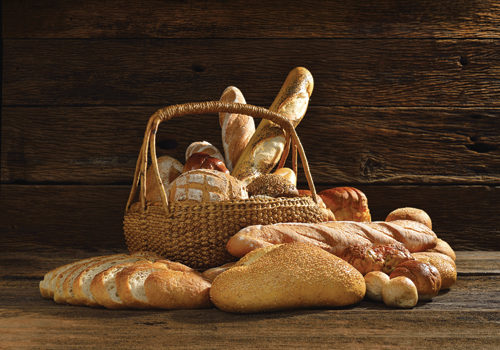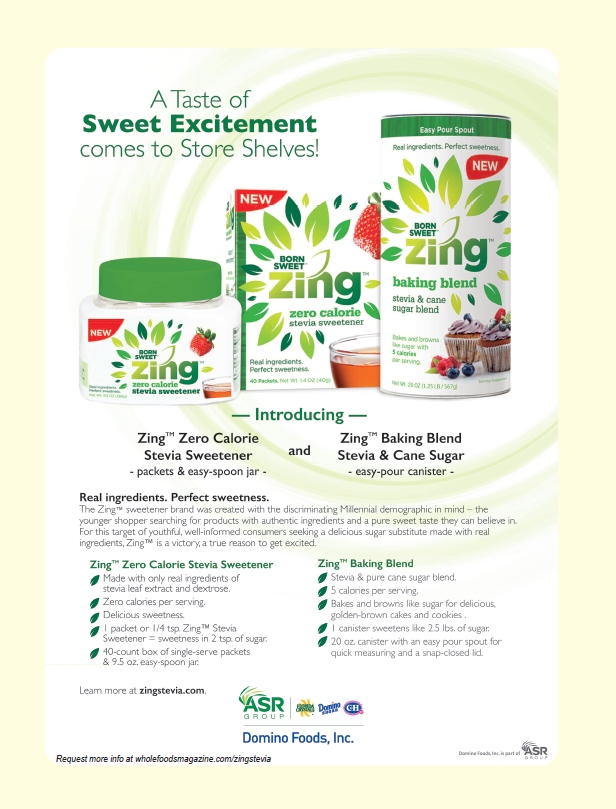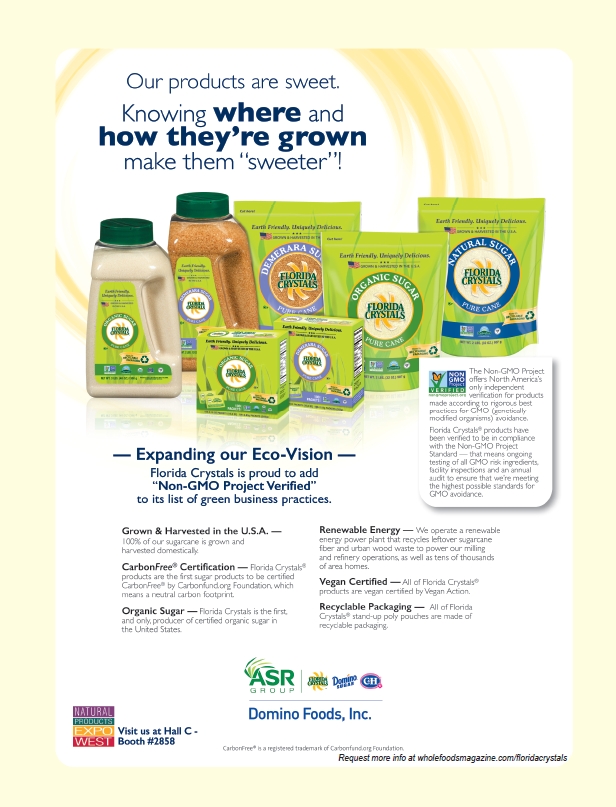People will always crave carbohydrates of all shapes and sizes. But the cookies, crackers, breads and baking mixes that lead the market, especially in the natural and specialty channels, are offering a little something extra. Let’s find out what makes certain baked goods more appealing to the foodies of today, and how retailers can make use of this knowledge.
Quality is King
Like bread in the presence of yeast, consumer expectations for their packaged baked goods are steadily rising. “Baked goods have really gone through a transformation in recent years,” says Kimberlee Ullner, founder and president of 1-2-3 Gluten Free, Inc., Chagrin Falls, OH. Consumers, she says, are looking for new, different and more customizable options, and most of all, they want to feel good about the foods they are preparing and offering to families and friends.
“High-quality baked goods of all kinds are flourishing at retail right now,” says Scott Frank, vice president of sales, Rustic Bakery, Inc., San Rafael, CA. He attributes this to consumers having grown savvier. This is a result of retailers, from high-end specialty grocers to big box stores, calling out the quality of ingredients, highlighting the craftsmanship that goes into foods and promoting the faces and stories behind the products, Frank says. He notes that social media and media outlets have also played a major role in helping to grow the sales of high-end baked goods.
Laura Stanton, director of marketing at 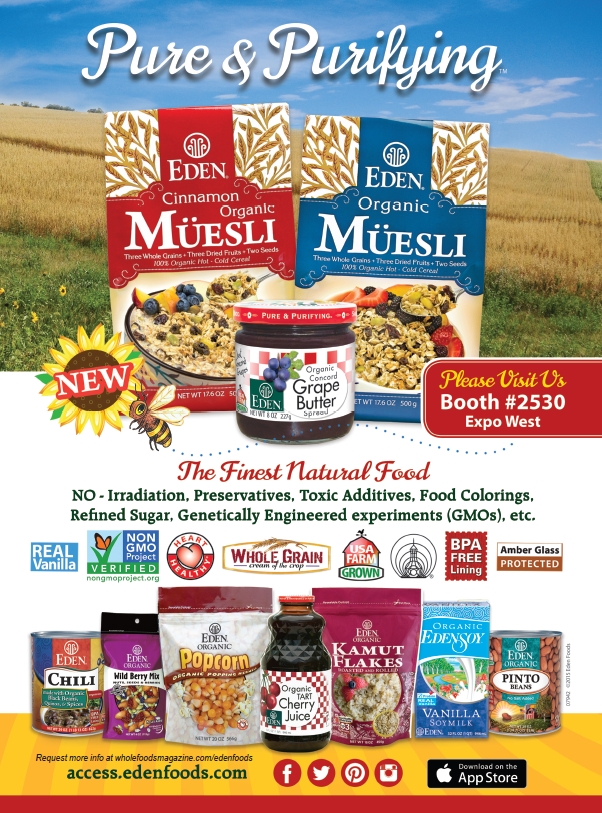 Dancing Deer Baking Company, Boston, MA, concurs with Ullner and Frank, saying that discerning consumers are more focused than ever on quality. Consumers are now more aware about ingredient sourcing issues, and they are reading labels and making different choices, she says. “We use cage-free eggs, creamery butter, pure vanilla and, wherever possible, whole grain flours in our products,” says Stanton. Her company’s products are baked from scratch in small batches, and use ingredients sourced as close to the bakery as possible.
Dancing Deer Baking Company, Boston, MA, concurs with Ullner and Frank, saying that discerning consumers are more focused than ever on quality. Consumers are now more aware about ingredient sourcing issues, and they are reading labels and making different choices, she says. “We use cage-free eggs, creamery butter, pure vanilla and, wherever possible, whole grain flours in our products,” says Stanton. Her company’s products are baked from scratch in small batches, and use ingredients sourced as close to the bakery as possible.
“We choose to oven bake our products in small batches because it creates a better tasting product,” says Barry Novick, vice president of Kitchen Table Bakers, Syosset, NY. He says that using microwaves could lower costs and increase production volume, but his company felt baking produces more complex, complete flavor profiles for its products. Novick asks, “How many of the greatest chefs use a microwave to make their creations?”
These trends can be observed in all manner of baked goods, including the once simple cracker. “There has definitely been a shift toward higher-quality snacking,” says Craig Lieberman, president and founder of savory crisps-maker 34 Degrees, Denver, CO.
Fueling the run on baked goods at retail is the consumer desire for convenient options that can also be part of a quality diet. “With consumers’ busy lives getting in the way of making meals from scratch, they’re increasingly turning toward packaged baked goods that take less time to prepare, but still boast high-quality nutritionals,” says Jennifer Ramstad, director of marketing for Pamela’s Products, Ukiah, CA.
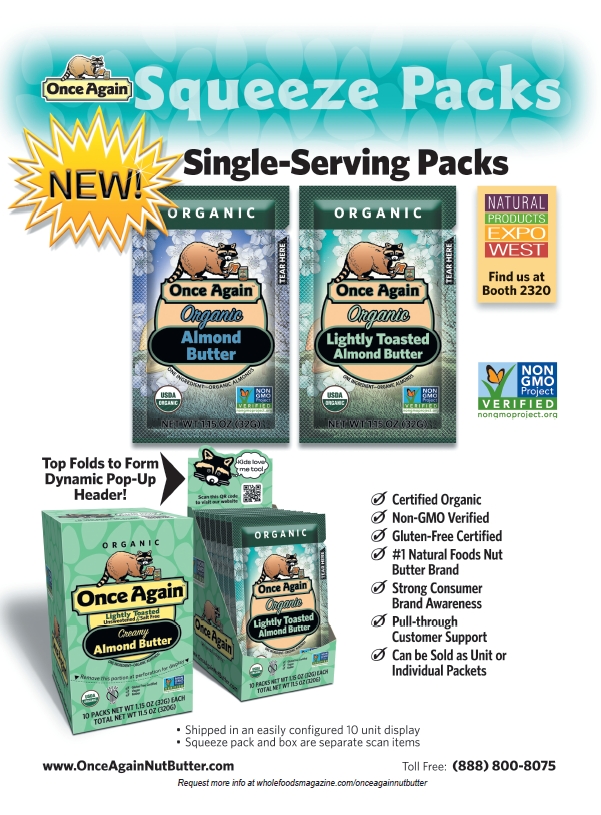 Ullner notes that baking mixes, in particular, can provide consumers with an easy and convenient way to bake at home, a task that otherwise can be cumbersome and time consuming. Many people’s lives are so hectic, baking at home has become a luxury, according to Stanton. “Buying a fresh baked brownie or cookie or baking mix is the next best thing to making it yourself,” she says.
Ullner notes that baking mixes, in particular, can provide consumers with an easy and convenient way to bake at home, a task that otherwise can be cumbersome and time consuming. Many people’s lives are so hectic, baking at home has become a luxury, according to Stanton. “Buying a fresh baked brownie or cookie or baking mix is the next best thing to making it yourself,” she says.
There is a demographic tilt to the growing demand for higher quality specialty foods, according to Brooke Smith, president of Salem Baking Company, Winston Salem, NC. “I believe it is somewhat generational, as the Millennial shopper is very grounded in simple, clean food trends, and they spend a growing number of their total food dollars in this category,” she says. Smith adds, however, that she believes this is a broad market movement that is embraced by more than one generation or culture.
Indeed, Frank says that his parents and grandparents are acutely aware of the positive changes taking place in both product quality and affordability. He says that often in conversation, they will point out a product they’ve just purchased that they’re proud to have in their pantry.
“Consumers love being trendsetters,” says Novick. “They like knowing they’ve discovered a gourmet item that isn’t yet on their friend’s radar.” People will bring their discoveries to parties and to friend’s houses for dinner, and use them in their own entertaining, he says. Food can serve as a conversation piece, and consumers feel confident sharing food they feel good about.
What’s in the Oven
Earlier, in describing the evolution of consumer expectations, Ullner used the key word customizable. This concept constitutes a major trend in baked goods. She says that some of her company’s baking mixes allow for customization, which helps add some creativity and a personal touch to the baking experience. Specifically, some of its gluten-free mixes are sugar free, which allows people to add the sweetener of their choice to the recipe. These mixes can also be made egg-free and dairy-free.
Ullner says her company also offers gluten-free “pan bar” cake 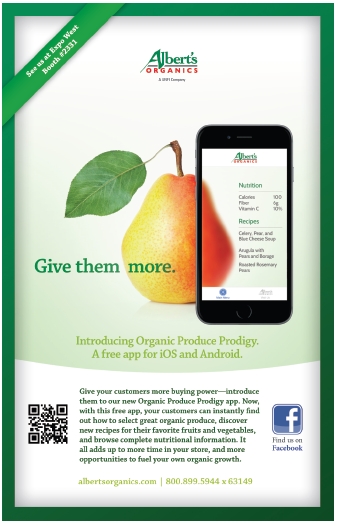 mixes that come with six suggested variations, depending on what is added to the basic mix: pumpkin, apple spice, banana, sweet potato, zucchini or carrot cake. Similarly, another mix can be used to make either muffins or quickbread, and can be styled into several flavors like blueberry, cranberry or chocolate banana.
mixes that come with six suggested variations, depending on what is added to the basic mix: pumpkin, apple spice, banana, sweet potato, zucchini or carrot cake. Similarly, another mix can be used to make either muffins or quickbread, and can be styled into several flavors like blueberry, cranberry or chocolate banana.
Lieberman says consumers are after products that pair well with other high-quality or artisanal products. “We’ve also noticed that consumers are becoming more ‘visionary’ with their snacking decisions and purchases,” he says. That is to say, consumers are finding culinary inspiration through the imagery on product packaging and in stores. Lieberman says his company includes a shopping list and imagery of pairing ideas (like crackers with cheese) on every box of its crisps. He says this helps consumers “think beyond the cracker” and “reconstruct” their own ideas and recipes at home.
Consumer eating habits are leading to a downsizing trend in baked goods. “Smaller, more frequent meals continue to drive demand for smaller, more convenient portions,” says Smith, adding that many of her company’s specialty cookies, such as its Moravian cookies, fit this mold. She says while they are low in calories, they still pack great flavor.
The market has seen products and functional ingredients with health benefits thrive this year, according to Smith. Ullner says that within the gluten-free baking space, her company pioneered fortifying mixes with nutrients like iron, B vitamins and calcium, which are often lacking in those adhering to a gluten-free diet.
“Gluten-free is a big trend in the baking space. As more and more people are choosing to eat gluten-free, there is an increasing need for great-tasting gluten-free baked choices,” says Ullner, adding that other dietary needs are also driving consumers to specialty baking mixes and baked goods. In addition to being gluten free, she says her company’s baking mixes are also free of many common allergens, including dairy/casein, soy, eggs, peanuts, tree nuts, corn and sesame.
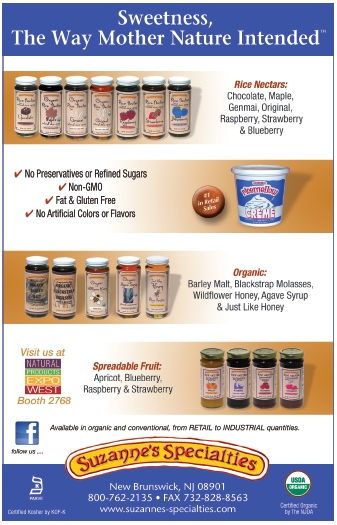 With the rise in food allergies and sensitivities, Ramstad says people are on the lookout for trustworthy snacks that are healthy, allergy friendly and can be easily packed up and carried around for the day. She says her company has launched a gluten-free fig bar line that answers this call for portable snacking.
With the rise in food allergies and sensitivities, Ramstad says people are on the lookout for trustworthy snacks that are healthy, allergy friendly and can be easily packed up and carried around for the day. She says her company has launched a gluten-free fig bar line that answers this call for portable snacking.
The emphasis on snacking is a consequence of the fast-paced lifestyles of modern individuals, and John Reaves, CEO and president of Milton’s Craft Bakers, Carlsbad, CA, says his company has responded to this trend with its own products. Its gluten-free cracker line features four savory flavors that are geared toward the snack-loving consumer. “We have also seen an increased desire for standup re-sealable bags that facilitate portability while keeping the product fresh,” Reaves says.
Novick says his company introduced a mini version of its cheese crisps to fill the need for products that can be tossed in a gym bag or work desk. Instead of the “mindless munching” that some products and packaging lend themselves to, he says the smaller size and portable, standup pouch of these minis is an effort to bring about more “mindful munching.”
As with the food industry as a whole, non-GMO ingredients are also becoming more of a priority for consumers when selecting baked goods. Ramstad says her company has taken the steps to secure Non-GMO Project Verification for its All-Purpose Flour Artisan Blend and Biscuit and Scone Mix, and that its other mixes are under Non-GMO Project review.
While new flavor profiles are always in demand, Stanton says people are making sure they cherish old favorites. “The Specialty Food Association’s panel of trendsetters at this year’s Winter Fancy Food Show picked the top five food trends for the 2015 Show, and classic Vanilla Bean was one of them!” she says. Her company’s line of Sweet and Savory Shortbread cookies features pure vanilla bean, but also includes exotic and trendy flavors like Rosemary and Pink Sea Salt, Espresso Chocolate Chip and Tangerine Cream Swirl.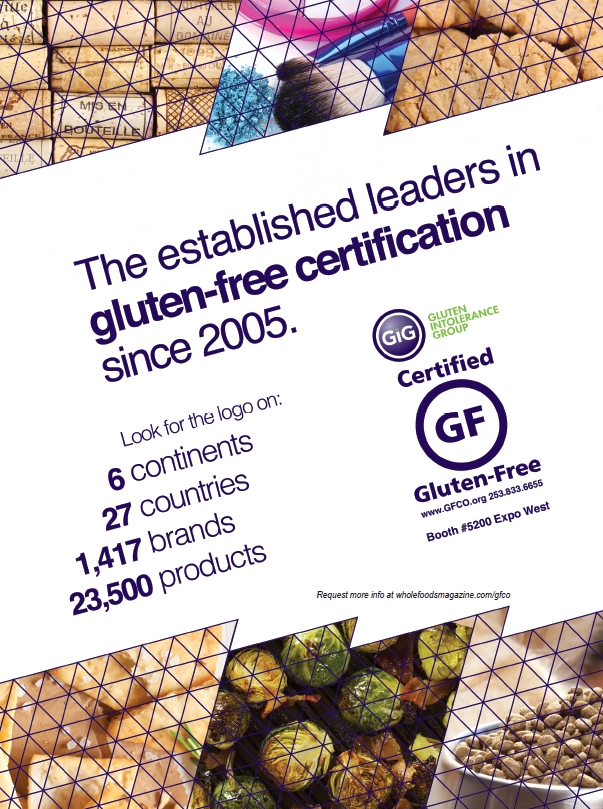
How They Like ‘em
Some of the ways people enjoy their baked goods are expected, while other habits are shifting. Either way, knowing what shoppers intend to do with these products may help retailers better serve their needs and grab their attention more easily.
Lieberman says his company’s crisps can be dressed up or dressed down, depending on the occasion. “While our fans enjoy pairing our crackers with cheese, spreads and other toppings, they are also keen on the crisps’ standalone snack-ability,” he says.
This split between occasion-oriented purchases and personal indulgence is a common theme. Reaves says that with his company’s gluten-free baked crackers, customers often enjoy them as a snack and eat them right out of the re-sealable bag. “For our gourmet crackers, which are larger, consumers often use them for entertaining and will serve them with a variety of toppings or dips,” he says. When it comes to crackers, form often lends itself to function, as in the case of the cheese crisps from Novick’s company. “Because they are sturdy like a chip or cracker, they can easily accompany dips, soups and salads,” he says.
The typical consuming habits for the flatbreads, panforte and cheese coins from Frank’s company include pairings with soup or salad, a fine cheese or cured meats. Or, he says they are often enjoyed alone. He says that they are addicting, and customers typically can’t eat just one.
Like a clutch quarterback, these types of products come on strong in the fourth quarter, and it all has to do with the holiday season. “Obviously, our sales soar during the fourth quarter for entertaining purposes,” Frank says. The products are up to any task, whether they’re enjoyed alone with a glass of wine or while entertaining at the house, office or at an event, he says.
 Smith reports that buying habits surrounding specialty cookies are shifting. In the past, most purchases were centered on special occasions or entertaining, she says. But today, the broader assortment of quality cookies and crackers on the market have shoppers beginning to stock more premium items in their pantries to enjoy every day.
Smith reports that buying habits surrounding specialty cookies are shifting. In the past, most purchases were centered on special occasions or entertaining, she says. But today, the broader assortment of quality cookies and crackers on the market have shoppers beginning to stock more premium items in their pantries to enjoy every day.
Companies are seizing on this year-round appeal. “For example, we have a chef on staff that creates pairings for our cookies that are shared on packaging, in social media and one on one with loyal customers throughout the year,” Smith says. These ideas are kept simple, often featuring pairings with other favorite desserts, coffees or teas, or even suggesting the use of cookies in place of crackers to serve with cheeses, dips and spreads, she explains.
The baking mix sector is much the same. Ramstad says her company’s products are often bought by consumers planning a meal for a larger group, but they are also popular for home-cooked meals. “They are also very popular during the holidays,” she says. Ramstad points out that all these uses are intended, as the company’s baking and pancake mix can be turned into everything from pancakes to birthday cakes.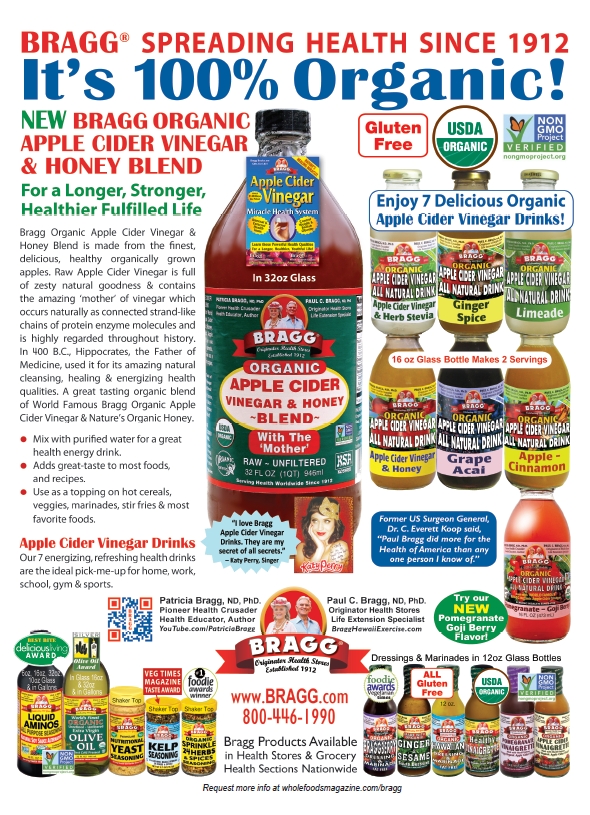
Families love baking together, Ullner says. In addition to family meals, bake sales and birthdays, she says her company has heard from consumers that have used its gluten-free cake mix for their wedding cake, “which we consider the highest compliment!” When consumers are excited and passionate about a food product, they tend to share it with others and become very loyal. “This is especially true when a consumer is managing a special dietary need and has found a product that they trust to be safe and meet their needs,” says Ullner.
The ready-to-eat packaged foods from Ramstad’s company are better suited for smaller parties or individuals. Many fans, she says, enjoy their snack bars as an on-the-go breakfast, lunch side or mid-day snack, while their packaged cookies are perfect for quick fulfillment of sweet-tooth dessert cravings. The company’s bite-sized cookies are good for children and adults alike, she adds.
“Keeping these habits in mind, it’s important for retailers to realize baked goods can play a part in all aspects of consumers’ lives,” Ramstad says. Access to products those on a gluten-restricted diet might otherwise miss out on is a key factor in the explosion of this market. “They can now bake up delicious, safe bread for their lunchtime sandwiches or make a thick crust pizza to enjoy with their family,” she says.
“Get your baked goods, here!” Now that we’ve brushed up on how baked goods figure into people’s lives, it’s time for some tips on how to put these products in the best position to sell at retail.
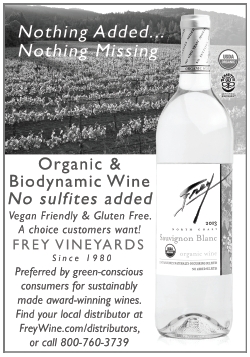 With pairing suggestions printed right on the side of the box, Lieberman says his company’s goal is to help drive sales for other products in the deli and throughout the store. One way retailers can help this process, he says, is by merchandising the crackers near or amongst perishable items in the deli department so customers can easily make the connection.
With pairing suggestions printed right on the side of the box, Lieberman says his company’s goal is to help drive sales for other products in the deli and throughout the store. One way retailers can help this process, he says, is by merchandising the crackers near or amongst perishable items in the deli department so customers can easily make the connection.
Cross-merchandising is an effective way to incite purchases in a number of areas, Ramstad says, and she gives the example of syrup and pancake mix. Displaying eye-catching product literature can also grab customer attention. Ramstad says her company offers brochures featuring beautiful photography, as well as recipes that show the versatility and ease of preparing sweet and savory foods with the company’s products.
Product demos, Ramstad says, are a particularly good way to introduce customers to baked goods. She says her company recently did several sampling demos of its gluten-free fig bar line and were pleased with the way it translated into purchases and consumer feedback.
Smith agrees, saying, “Typically with specialty cookies and crackers, sampling is key to winning over new customers.” But since demos can often be difficult and sometimes costly to 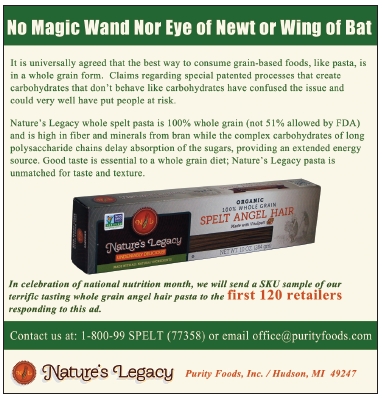 execute, she says that creative floor displays, unique signage, special price promotions and targeted customer communication are all important strategies to employ.
execute, she says that creative floor displays, unique signage, special price promotions and targeted customer communication are all important strategies to employ.
When establishing a product set and overall merchandising plan for baked goods, Stanton says to strike a balance between best sellers and new and seasonal choices. “Retailers will want to provide solutions for the weekly shopping basket as well as offer an opportunity for impulse and indulgence,” says Stanton.
Having multiple points of purchase for the same product can increase sales velocity and help capture the “snacking” sale, according to Reaves. He says in his company’s experience, retailers that display its products on endcaps, in the cracker aisle and in the deli are able to take advantage of this effect. WF
Published in WholeFoods Magazine, March 2015

